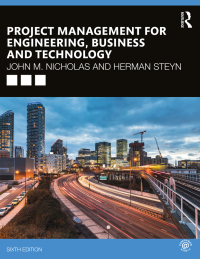3. Regarding the cash-flow problem that was aggravated by the high rate of spending, discuss the desirability
Question:
3. Regarding the cash-flow problem that was aggravated by the high rate of spending, discuss the desirability of performing projects faster than planned.
The team at South African (SA) gold mine was tasked with sinking a 2,000-meter-deep ventilation shaft and excavating space for a station at the bottom. The plan was to sink the shaft within 20 months at a cost of R65,000 (about US$10,000) per meter of shaft depth. For the station at the bottom, 30,000 m3 of rock would have to be excavated within 3 months at a cost of R700 per m3. The plan assumed a uniform earned value over time.
After the work had begun, the scope of the project was changed to include excavation for a new station halfway down the shaft (Figure 13.23) with a volume of 20,000 m3. It was agreed that the additional work would have to be done at the same excavation rate as the bottom station, but since removal of the rock required hoisting only 1,000 meters (instead of the 2,000 meters for the bottom station), the team agreed on the cost of R500 per m3 for the new station. Since limited working space and available resources would delimit the amount of work that could be done simultaneously, everyone agreed that the new station would delay the sinking of the shaft. After 13 months, the shaft had reached a depth of 1,400 meters below surface and excavation for the halfway station was completed. The actual cost at this time was R90 million, which was more than was budgeted for the period. This provoked a cash-flow problem at that stage, and executive management requested an earned value report. Information on the relative amounts of time spent on excavating the new station and sinking the shaft was not available.
Step by Step Answer:

Project Management For Engineering Business And Technology
ISBN: 9780367277345,9781000092561
6th Edition
Authors: John M. Nicholas , Herman Steyn





